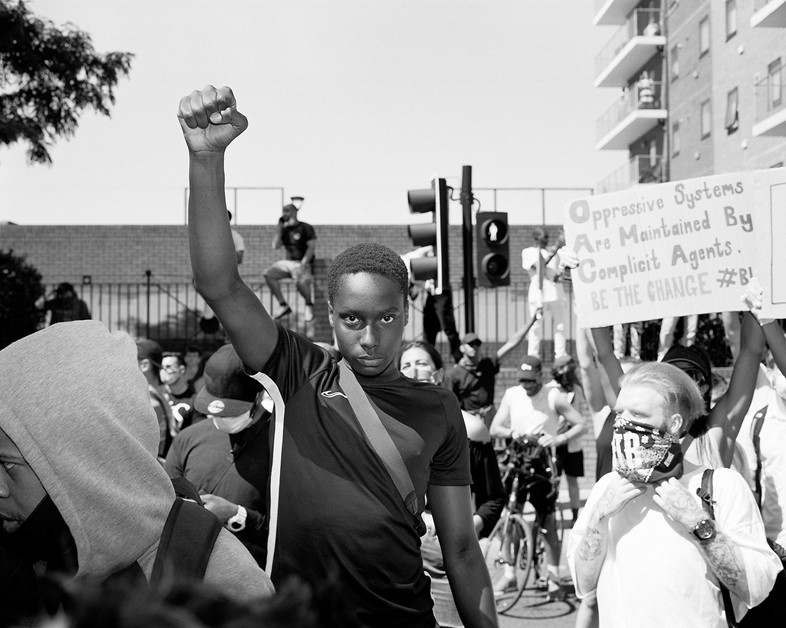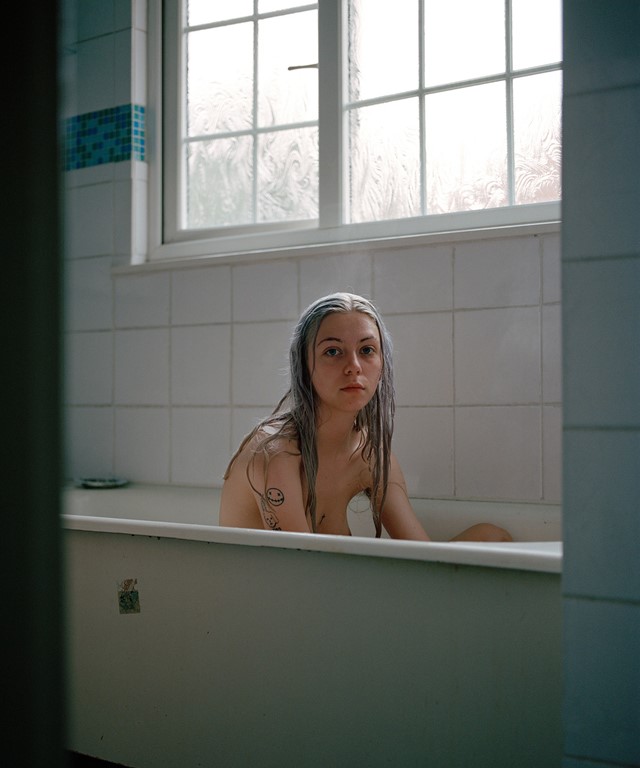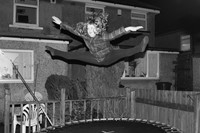A new exhibition in Newcastle brings together images from nine photographers who “document the awkward, surprising and passionate journey into adulthood”
“It is nothing new to say that photographs are a critical platform through which young people can be seen, heard and remembered,” says Liz Hingley, the curator of a new photography exhibition at Side Gallery in Newcastle. “The last 40 years are especially significant, as they capture the rise of our networked world and the ability to represent ourselves in the digital sphere,” she goes on, describing the basis of Youth Rising in the UK, 1981-2021.
A well-established phenomenon – young people have played muse to artists and photographers for decades, while contemporary pop culture’s fascination with those under 21 remains abundant – the new show, open now until 3 October, brings together images from nine photographers who have approached the subject through an intimate lens, placing themselves, their loved ones or their communities in their work. Here, rarely seen images by Chris Killip and Sirkka-Liisa Konttinen examine youth culture in the 1980s, while Alys Tomlinson, Maryam Wahid, Sadie Catt, Tom Sussex, Christopher Nunn, Paul Alexander Knox and Vanessa Winship offer more contemporary interpretations of young lifestyles. “These nine photographers tenderly document the awkward, surprising and passionate journey into adulthood, that resonates across generations but is at once unique to each,” says Hingley.
Originally intended to open in 2020, Youth Rising was reshaped into a more politically-charged vehicle in the intervening months, with Hingley keen to acknowledge how the events of the last year have altered the social landscape. “This exhibition seeks to question, imagine and value the experiences of young people in today’s shifting world,” she notes, identifying the legacy of Covid-19 and the momentum gained for global movements advocating for racial justice and gender equality as key arenas to be navigated by young people today. The use of the word ‘rising’ in the show’s moniker holds particular weight, she explains, as it “signifies the maturity and creativity required to stand up for the urgent issues facing their generations’ future and to oversee change.”

Young people, she goes on, have been fiercely vocal about showing up – as in Tommy Sussex’s portrait from a Black Lives Matter protest in May 2020 – while simultaneously existing in a moment in which the influence of the internet is paramount and they must entertain “an unparalleled ability to represent themselves in digital spaces.” With this hybrid identity in mind and in light of the pandemic prematurely ending school terms, the ground floor of the exhibition has been given to students unable to show their final year projects in a physical space, with 43 photographers from UWE Bristol and Sunderland University invited to show images made during the pandemic. “This exhibition cannot offer answers,” the curator says, “rather, I hope it might provide a platform for purposeful conversation about the needs and visions of young people as society regroups, retunes and rebuilds in the aftermath of Covid-19.”
Youth Rising in the UK, 1981-2021 is at Side Gallery in Newcastle until 3 October, 2021.






